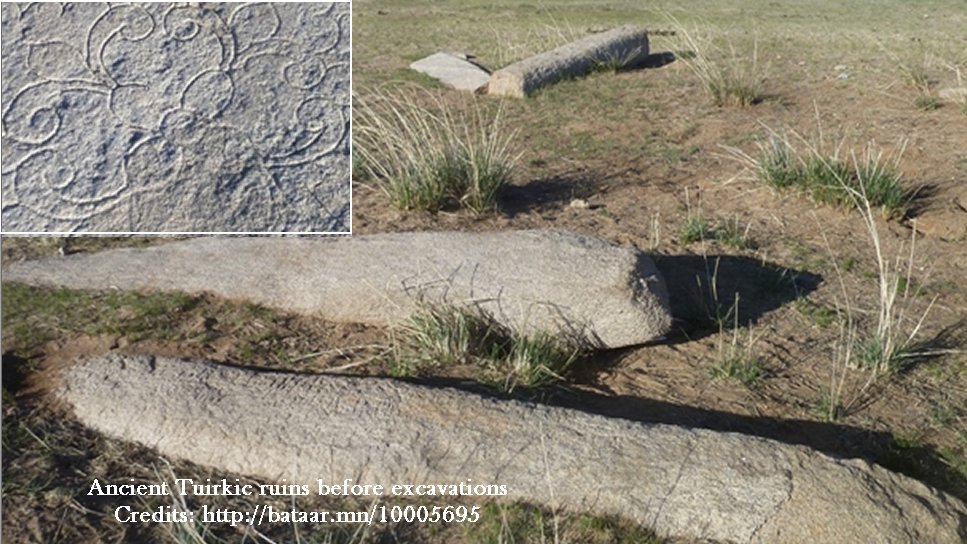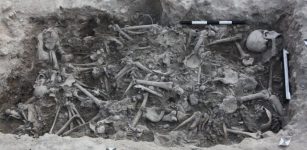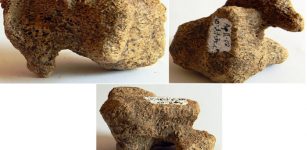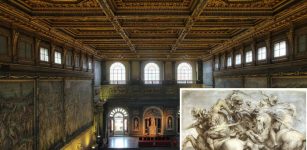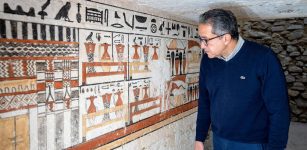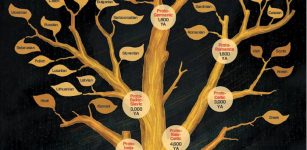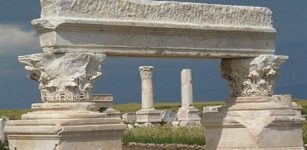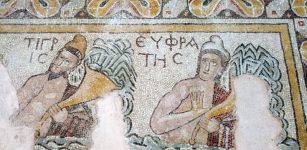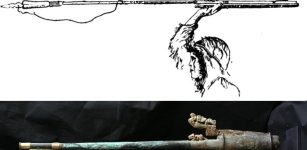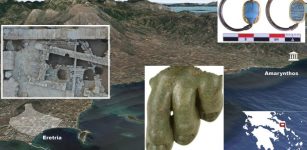Discovery Of Ancient Sarcophagus And 14 Stone Pillars Covered With Inscriptions In Eastern Mongolia
AncientPages.com - A unique ancient monument built during, the late Second Ancient Turkic Qaghanate, has been discovered in eastern Mongolia by archeologists from Osaka University, Japan and the Institute of History and Archaeology of the Mongolian Academy of Sciences.
The excavations, led by Professor Takashi Osawa at Osaka University , lasted three years from 2015 to 2017 and revealed ancient ruins of a complex consisting of the stone sarcophagus at the center of the mound, where a deceased person might be placed, is surrounded by 14 stone pillars with Turkic inscriptions.
According to Takashi Osawa, the “monument will reveal that power relationships of rulers in the east area of the Turkic Qaghanate and their territories as well as their political and military relationships with Mongolian tribes, such as the Khitan, Tatabi, and Tatar.

Illustration of a ritual conducted around the monument (drawn by former director of the National Museum of Mongolian History) (September 2016) (credit: Osaka University and Institute of History and Archaeology, Mongolian Academy of Science)
“In addition, the arrangement of these stone pillars on the plateau will also provide important information for discussing the religious ideas and world outlook of the ancient nomads.”
Dated to the 8th century, the inscriptions are the largest Turkic inscriptions, discovered in Mongolia, are arranged in a square on the steppe called Dongoin shire, where the unique monument ruins remain.
Researchers say it was the center of the eastern area of the ancient Turkic Qaghanate, of which location was not known from materials written in Chinese and Turkic texts.
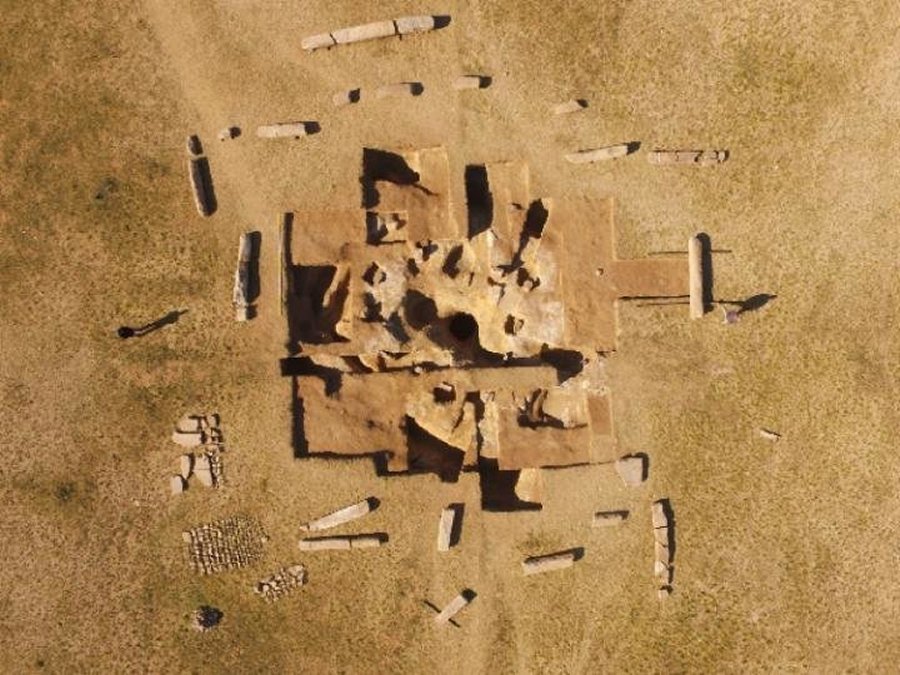
Drone aerial shot of the ancient Turkish ruins on Dongoin shiree. (North at the top.) Segments of the inscriptions and sarcophagus excavated from the hole at the center of the ruins can be seen. (September 2016) (credit: Osaka University and Institute of History and Archaeology, Mongolian Academy of Science)
The inscriptions have been deciphered and suggest the sarcophagus belonged to Yabgu (viceroy), which was the highest ranking just behind Qaghan, during the reign of Bilge Qaghan (716-734 AD) of the Second Turkic Qaghanate.
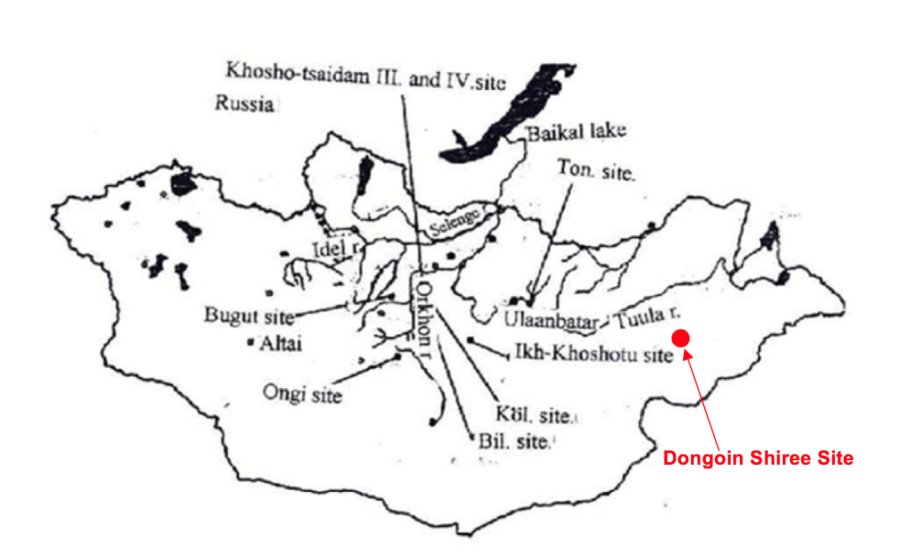
Conventional map showing places of ancient Turkic inscriptions and ruins on the Mongolian Plateau (credit: Takashi OSAWA)
It was also found that the Yabgu became a Tölis-Shad (Royalty of the East), a commander in chief and highest administrative officer, in eastern Mongolia during the reign of Tengri Qaghan (734-741 AD).
NOTE: Qaghan (or Khagan) is a title of imperial rank in the Turkic and Mongolian languages equal to the status of emperor, and is someone who rules a Qaghanate or Khaganate (empire).
AncientPages.com
Expand for references
